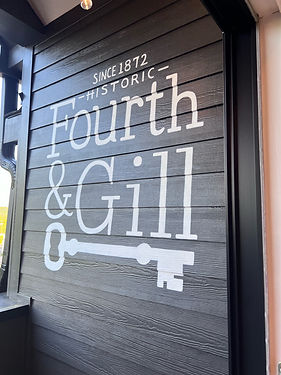
Fourth & Gill Neighborhood is a historic neighborhood near downtown Knoxville.
Historic Guidelines
Fourth & Gill is a historic neighborhood, which means homes must be built and renovated with strict adherence to the Fourth & Gill Design Guidelines and must be approved by the City of Knoxville Historic Zoning Commission.

History of Historic Fourth & Gill
The history of Fourth & Gill Neighborhood, a National Register historic district, is truly a mirror of Knoxville and America's urban history during the past century and a half. It is a story of urbanization, of prosperity, decline, and rebirth. What follows is a brief overview of the story, intended to provide a context through which to understand and appreciate Fourth & Gill as it appears today.
Early Development (Civil War to 1900)
At the time of the Civil War, Knoxville was a small river town of less than 4,000 residents. The area of Fourth & Gill was still farmland, with only three or four different property owners. By 1900, Knoxville had grown to encompass this entire area, having annexed the briefly-independent municipality of North Knoxville in 1897, and the population of the city was 32,600. Fourth & Gill grew quickly into a tree-lined streetcar suburb.
Architecture & Building Periods
The houses in the community represent two distinct periods of American architecture. The oldest structures (1880-1915) closer to downtown are generally two-story Victorian homes characterized by complex roof forms, asymmetrical massing, and scroll-cut decorative trim. These transition in the latter part of that period into more symmetrical homes that freely borrow some Classical elements, especially porch columns. Later housing (1910-1930) is generally Craftsman or Bungalow style, usually one-story homes characterized by low-slung roofs with exposed rafters and large porches. These predominate north of Haynes Place. Of the 280 residential structures in Fourth & Gill, including single family houses, duplexes, and apartment buildings, only a dozen were built after 1930. Many of the houses were designed by some of Knoxville's leading architects of the era, including George F. Barber and Albert and Joseph Baumann.

The Caswell-Taylor House
The Caswell-Taylor House was a historic home located at 803 North Fourth Avenue, across the street from the Fourth & Gill Neighborhood Center (#14 on the tour). It was also known as The Governor's House, as it was the home of Governor Robert Love Taylor for several years.
After suffering from years of neglect, the house was eventually destroyed by a fire. All that remain today are the stone steps and entry columns at the corner. Ally Architecture, a sponsor of this tour, is currently designing a townhome community to be located on this site.
Economic Decline & Housing Changes (1920s-1960s)
The growth of the neighborhood continued until Knoxville's economy began to stagnate in the 1920s. With the national depression of the 1930s, many of the larger houses were converted to duplexes and multi-family dwellings. Original families moved from the neighborhood, and maintenance of the original buildings was ignored. Particularly after World War II, new automobile-oriented suburbs lured residents from the inner city, and many of the homes in Fourth & Gill were occupied by the less affluent. Another significant blow came to the neighborhood with the construction of I-40, which destroyed many of the neighborhood's oldest and grandest buildings along Third, Fourth, and Fifth Avenues, and created noise and air pollution for those who remained.
Community Organizing and Renaissance
It was at this time, however, that a group of mothers organized to better the lives of their families. These women enlisted the aid of social and housing activists, and a renaissance began. This group evolved into the Fourth & Gill Neighborhood Organization, whose purpose was to create a better neighborhood and improved housing standards for those residing in the dilapidated and ignored Victorian homes. Armed with urban renewal money, the first housing and quality of life improvements began.
The Revival Movement
As this program was gathering momentum, the gas crisis of the early 1970s led to a "back to the city" movement throughout the country. Knoxville's young professionals discovered the once-fine homes that comprise the neighborhood, and these "new immigrants" began to buy and restore many of its houses. Over the past decades, social activism and home restoration have combined to ensure that the renewed Fourth & Gill Neighborhood is an urban success story. There remain houses that are unrestored, but the prospects for this century-old part of Knoxville have never been brighter. The community's architectural attributes combine with the social history of the people who built and rebuilt the neighborhood, and who continue to rehabilitate its buildings.
Living History Today
It's a 19th and 20th century neighborhood, but also a 21st.
It's not uncommon to find a resident who has moved three or four times in the last twenty years, but never more than five blocks, leaving a chain of renovated houses behind them.
And new, infill houses have been built on lots where other buildings have been lost, drawn to this urban neighborhood of friendly neighbors and walkable streets.



